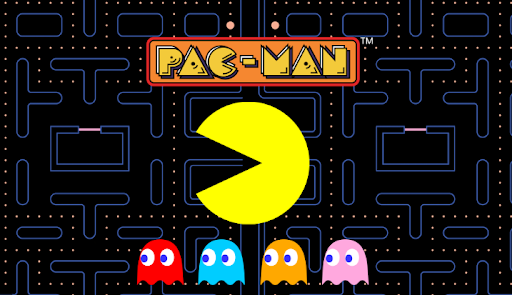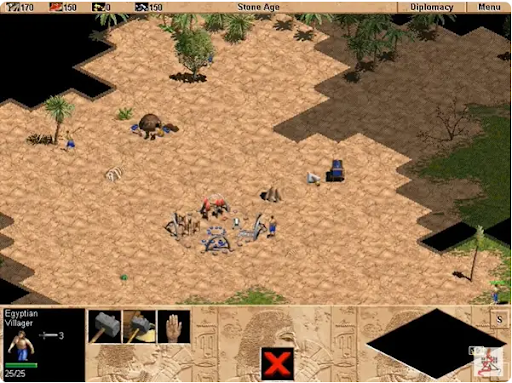The gaming industry is super massive today, and gamers have tons of options to choose from. But:
Although computers have been with us for decades, changes in CPUs and operating systems make it problematic for modern machines to run classic games, i.e., those influential from the late 1970s to the early 2000s.
"So what?" you may ask. Why bother about old video games when the modern digital landscape is diverse and comprehensive?
This article explores the role of classic games in shaping the industry and their importance in computer history education. Let's find out why preserve those games when the risk of losing their technologies is more extreme than ever.
Classic Games in Computer History Education: Why Bother
First and foremost, classic games are about cultural impact and nostalgia.
They serve as a historical record of the gaming industry's development. They show the evolution of technology, design, and storytelling in the niche. Looking at those products, we see the growth of creativity and innovation through the decades and get valuable insights into the early days of computer gaming.
Classic video games are a great source of inspiration for modern designers. With unique gameplay mechanics and artistic styles, they open the door to the world of computer program creation. By examining their software, graphic elements, and sound recordings, today's developers learn from the challenges their colleagues faced in the past.
Also, classic games bring educational value. By integrating them into academic programs and assigning an argumentative essay about video games to students, we encourage learning the foundations of game design and programming.
The 1980s and 1990s were crucial in the history of video games. It was the time of rapid technological advancements and the rise of home gaming consoles. Some iconic franchises emerged back then, which would be legit for modern designers to play to understand their historical context and contribution to the industry.
The early 1980s were the peak of arcade gaming. The world saw iconic titles like Pac-Man, Donkey Kong, and Space Invaders. These games popularized the concept of high scores and competition. Thanks to technological improvements in graphics and sound (the transition from 8-bit to 16-bit), the world got the Sega Genesis and Super Nintendo Entertainment System (SNES), signaling the enhanced gaming experience.
The 1990s have brought us 3D graphics. Games like Wolfenstein 3D and Doom pioneered the first-person shooter genre. Super Mario 64 introduced a fully 3D world. Full-motion video, voice acting, and expansive worlds have become available with the adoption of CD-ROMs.
Personal computers got prominent with Windows 95 providing a standardized gaming environment. PC gaming thrived with classics like StarCraft, Half-Life, and Age of Empires, contributing to the diversity of gaming experiences. It stands to reason that all these developments in the computer industry and gaming technology are worth saving and studying for understanding the niche.
With all their importance for computer history education, classic games become more and more challenging to preserve, given the rise of new techs and the inability to run them on modern platforms. Is there anything we can do to solve the problem?
Classic Games Preservation: Threats and Solutions
Indeed, classic games aren't that simple to preserve and integrate into computer history education today.
First, educators may face the problem of outdated technology. Classic games were designed for 1980-90s platforms, so they fail compatibility with modern devices and operating systems. It can be challenging to run them without specialized equipment.
The same is true from a student's side:
Not all students have the technologies required to play classic games. Limited computer access, unreliable internet connections, and outdated hardware prevent the implementation of corresponding gaming activities in educational settings.
Plus, classic games lack specific educational resources and guidelines to use in classrooms. Educators may need to create new lesson plans or adapt their materials to integrate classic games into the learning process. Another problem is student motivation: Some may consider classic games boring or less relevant to modern curriculum standards.
More than that, we face legal and licensing issues in using classic games in education. Most iconic games are still under copyright protection, which makes them impossible to navigate for educational use.
What can we do to preserve classic games for future generations?
One solution could be digital archiving and emulation. By building centralized archives for classic games with all their databases, documentation, and downloadable copies, we'll save them for investigations and in-depth research.
Besides, it would help to make classic games compatible with modern hardware and software. Emulation projects mimicking the original gaming environment could help with that.
Another solution is game preservation education. Integrating the issue into academic programs and game development courses would help youngsters understand the importance of preserving classic games and encourage them to contribute to preservation efforts. It includes cataloging, documenting, and testing classic games to ensure their accurate preservation.
Also, gaming museums and exhibition spaces would be the perfect hubs for showcasing the history of video games and educating the public about them. By promoting such open-source initiatives, we provide free access to many iconic video games worth saving and learning.
Final Words
Preserving classic games is essential for learning computer history and gaming industry development. They showcase the evolution of gaming graphics and technology, influence modern game design, and encourage discussions on the cultural impact and the emotional connection classic games evoke in the gaming community.
Despite many challenges, the world puts effort into overcoming all obstacles through game-based learning and teacher training programs. Digital archiving and emulation, licensing agreements, educational programs, and community involvement — these initiatives serve to preserve classic video games for future generations.



















